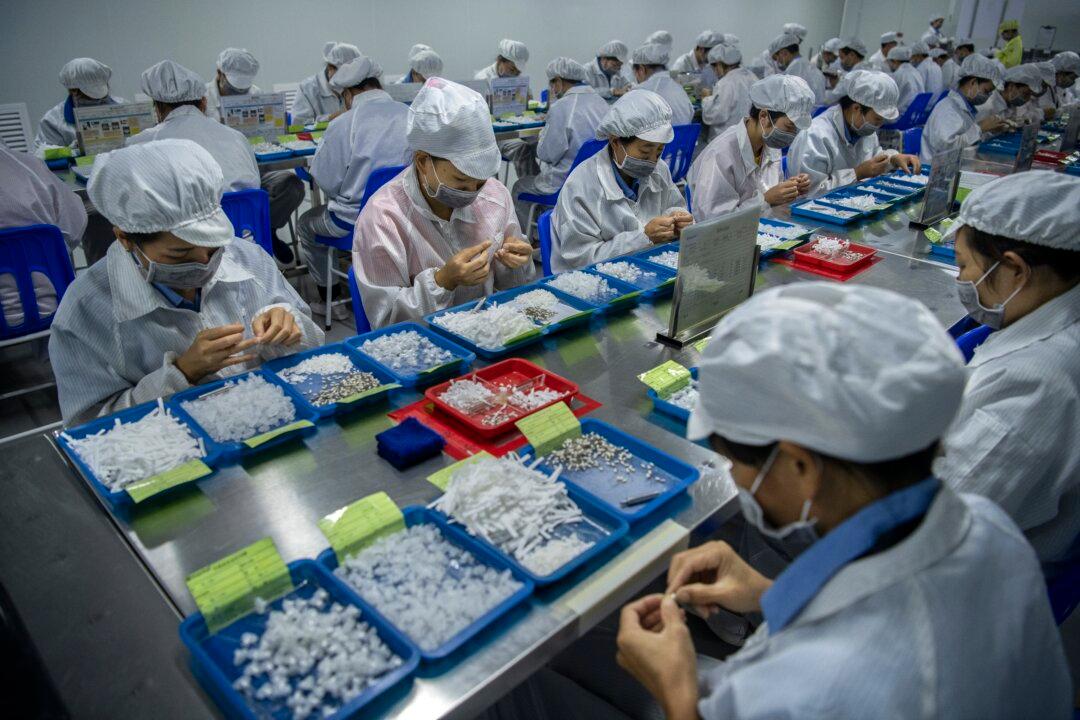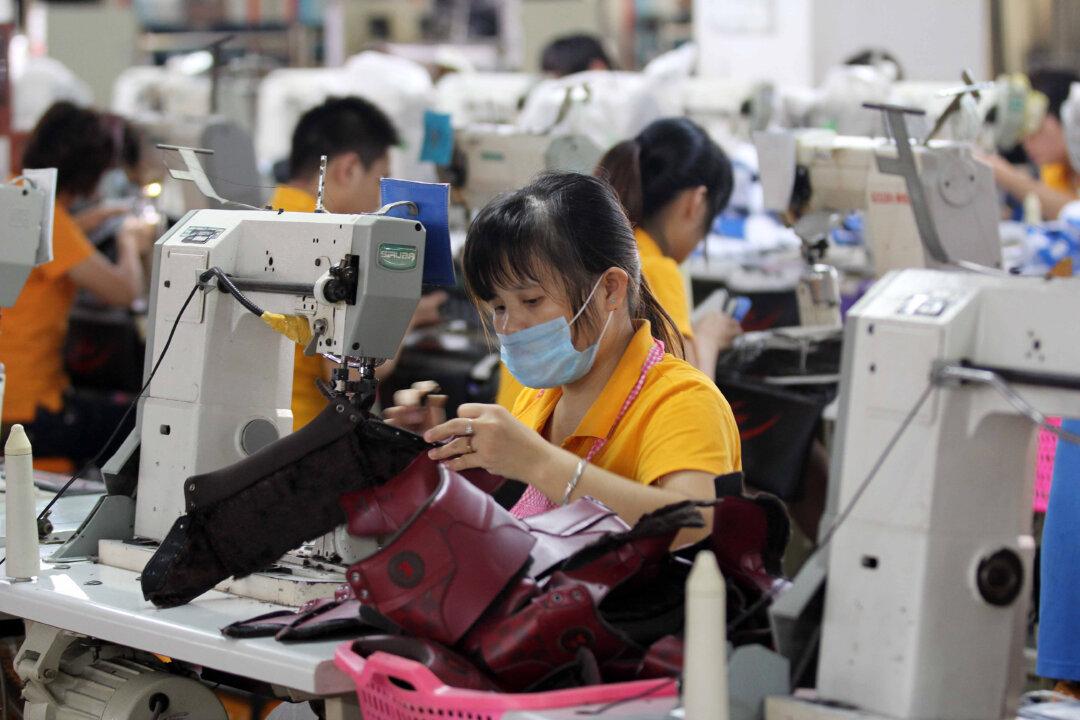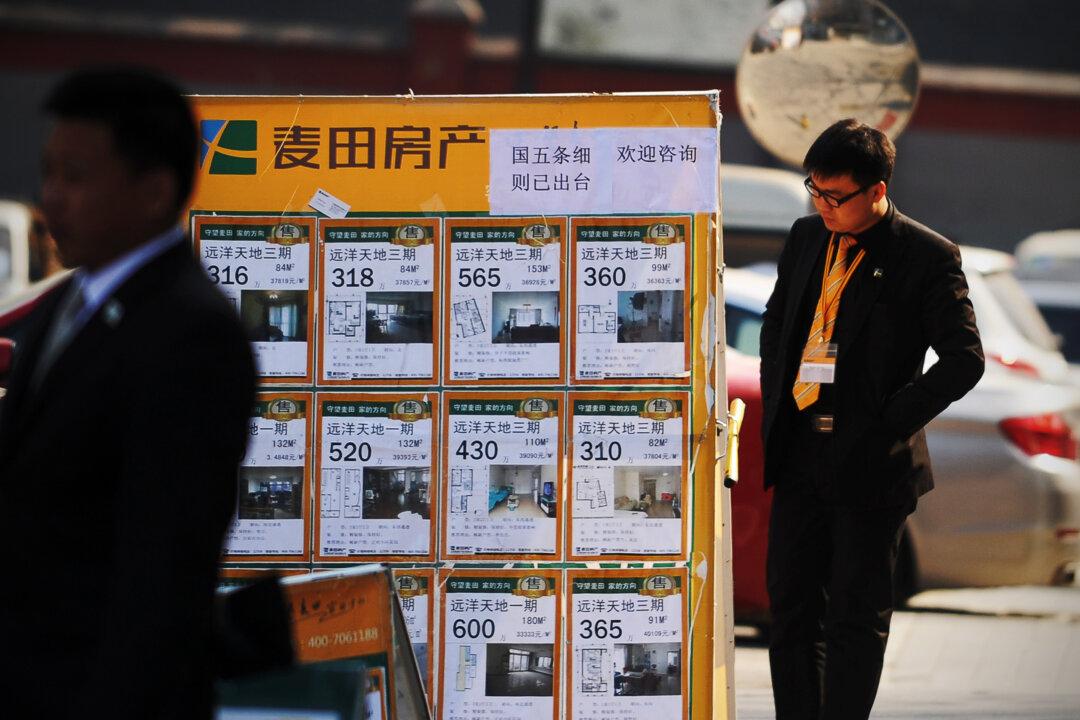With China’s economy stalled, the regime is looking for a jump start, but experts say the proposed remedy risks a debt crisis and galloping inflation.
At the annual political conclaves called the two meetings—the National People’s Congress and the Chinese People’s Political Consultative Congress—talk has been about giving the Chinese economy needed stimulus through increasing urbanization.
A peek was given at official plans at the end of 2012, when an official from the National Development and Reform Commission revealed some of the content of an initial draft proposal for “Promoting Healthy and Orderly Urbanization 2011-2012,” according to Guangzhou Daily. The draft calls for an urbanization budget of 40 trillion yuan (US$6.4 trillion) over the next 10 years.
Details regarding the spending are to be made public during the “China Urbanization Working Meeting” after the conclusion of the Two Meetings, according to China Securities Journal, a national securities newspaper sponsored by state-run Xinhua News Agency.
State media have quoted officials saying that urbanization is China’s “engine of economic development.”
Loaded With Debt
Dr. Frank Xie, who teaches business at the University of South Carolina Aiken, told The Epoch Times that currently the Chinese economy is hitting a brick wall. As domestic demand slows, the government is resorting to an old gimmick, which is relying on investment to stimulate domestic demand. At the same time, urbanization requires real estate construction, which increases GDP.
Many economists have their doubts about the source of the 40 trillion yuan. China’s economic development was propelled by government-backed bank loans. Yet the huge risks involved with a 40 trillion yuan loan far exceed the banks’ risk tolerance level.
One day prior to the opening of the “Two Sessions,” the National School of Development (NSD) at Peking University held a special forum on urbanization. At the forum, the issue of expense distribution between the central and the local governments was discussed. Panelists said that if that issue is not resolved, the debt crisis could explode at any time. China’s current total debt already amounts to 220 percent of GDP.
In a Feb. 28 report, Reuters quoted sources who maintain a close relationship with Chinese leaders as saying that China is considering major reform of the credit market in order to raise the 40 trillion yuan.
The problem is that China’s credit market is already loaded with debt. Most credit is issued by policy banks. Yahoo financial edition reported that as of January 2013, statistics from China People’s Bank show total outstanding debts of 26.4 trillion yuan (US$4.2 trillion).
Prominent Chinese economic commentator, Zhu Daming wrote on his blog on Jan. 10 that there are many risks in urbanization, the number one being debt. The core of China’s economic growth is fixed asset investment.
However, too much fixed asset investment will result in lack of investment in other assets and can trigger the bursting of an asset bubble. This, in turn, will lower the value of fixed assets, resulting in a debt crisis, Zhu wrote.
Zhu wrote this has been a common problem seen by other countries during their urbanization process. But China’s problem is more severe, he said. The reason is simple. State intervention in real estate will cause a price increase of land and real estate.
“Under this circumstance, many regions increase their debts. If the government did not print more currency, many local governments would have been bankrupted several times. If this 40 trillion yuan debt happens, the debt crisis will explode with a slight change in the market. China’s economy will face dire consequences,” Zhu wrote.
Inflation
In 2008, the Chinese regime implemented a 4 trillion yuan stimulus package, which was followed in 2009 by banks lending 9 trillion yuan, backed up by the state. This has resulted in a distorted economy, inflation, and rising real estate prices.
Niu Dao, an economic commentator for the state-run CCTV, blogged on Feb. 28 that the printing of first 4 trillion and then 9 trillion in currency was a turning point in Chinese history.
This economic stimulation pushed the economy to the edge of collapse and resulted in huge debt, Niu Dao wrote. However, the Chinese Central Bank not only did not stop printing currency, but increased the speed of it. The debt crisis is getting worse and might explode as early as this year, Niu Dao concluded.
According to Chinese Central Bank statistics, M2 (a country’s liquid money supply that includes time-related deposits, and non-institutional money market funds) has increased from 47 trillion yuan in 2008 to 97.42 trillion yuan in 2012, doubling in just four years.
In contrast, the Consumer Price Index published by the regime maintains a 3.4 percent increase year after year. But the data is not convincing to economists or the general public.
Niu Dao’s analysis shows that the buying power of the renminbi (RMB) has decreased 5 times. This data may be a little exaggerated, but many economists believe that inflation is rising at 10 percent per year.
Spreading the 40 trillion yuan over 10 years means that every year 4 trillion yuan will be invested to stimulate the economy. The inflation will become unimaginably high, according to Dr. Frank Xie.
Forced Urbanization
The percentage of people in China living in cities is currently at 50 percent, and the regime expects it to reach over 60 percent by 2020, according to a Feb. 6 report by Xinhua’s Economic Information Daily.
In western countries urbanization happened naturally with their economic development and private ownership of land, Dr. Xie said. However, China’s urbanization is arbitrarily implemented by the state and includes the use of forced evictions and forced demolitions all over China, he said. The purpose is to stimulate the economy, but all this has a damaging effect, he said.
There is no private land ownership in China, and local governments have benefitted from land grabbing. They pay little or no compensation to the peasants and sell the land at a high price to developers, Dr. Xie said.
Forced evictions and forced demolitions happen every day in China and are the cause of thousands of mass protests, as well as suicides, and homicides, Dr. Xie said. In addition, large numbers of landless farmers unable to find other jobs will become a huge burden to the state.
If the Chinese regime continues its forced urbanization policy, Chinese society will become ever more unstable, Dr. Xie predicted.
Translated by Frank Fang and Sophia Fang. Research by Ariel Tian. Written in English by Gisela Sommer.
Read original Chinese article.



